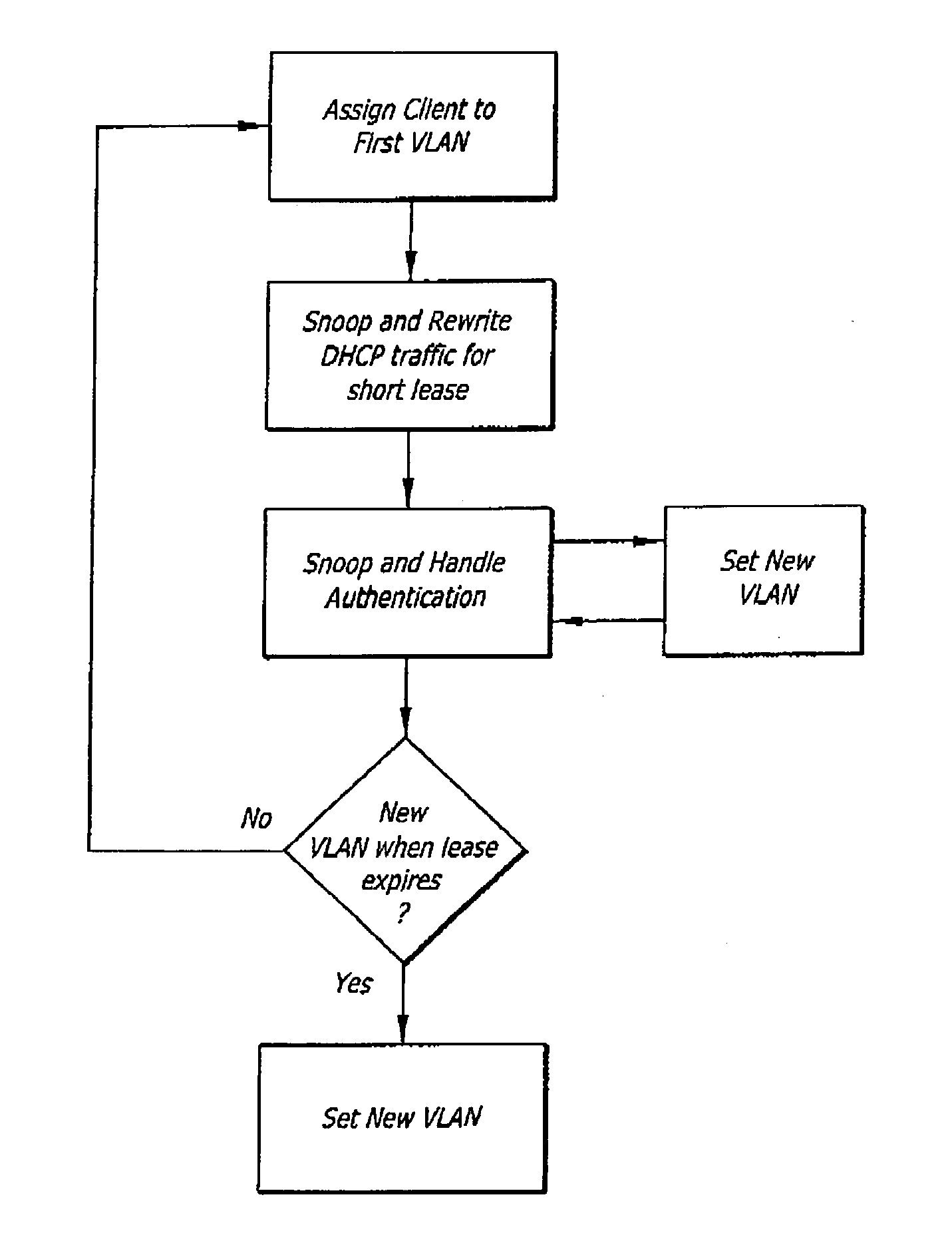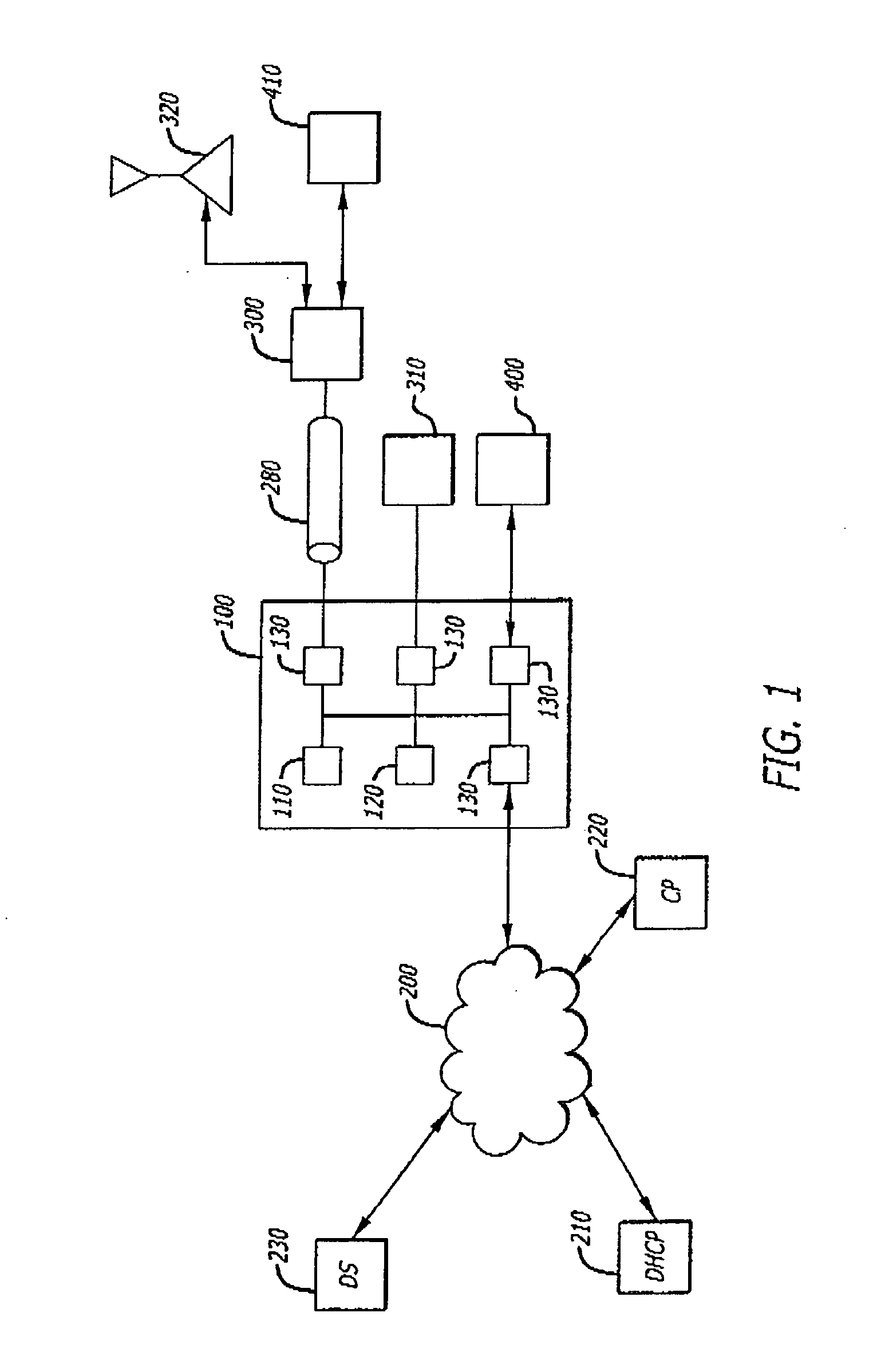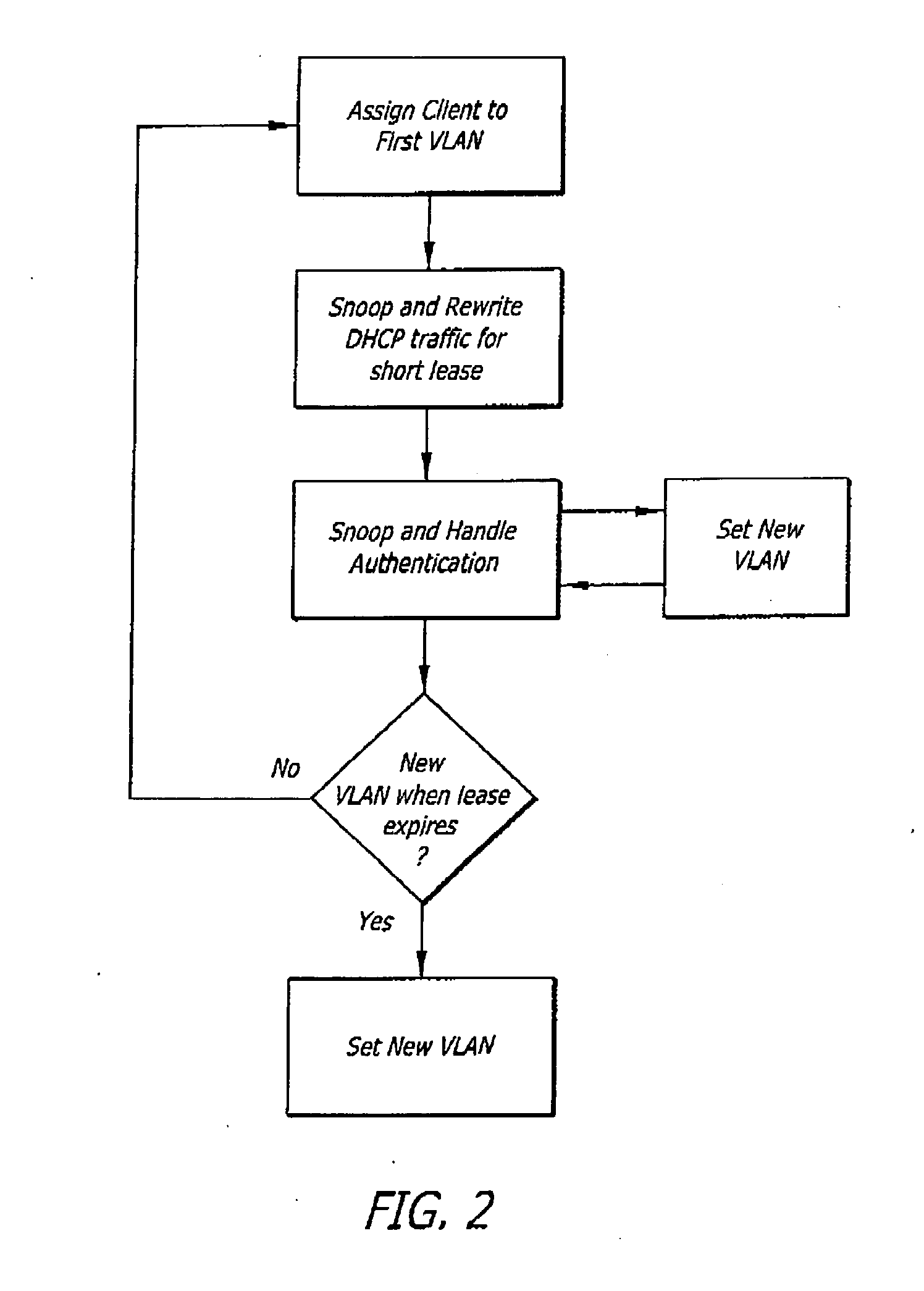Multimode Authentication
- Summary
- Abstract
- Description
- Claims
- Application Information
AI Technical Summary
Problems solved by technology
Method used
Image
Examples
Embodiment Construction
[0013]Embodiments of the invention relate to methods of assigning and reassigning clients to VLANs on a digital network.
[0014]According to the present invention, when a client connects to a digital network having multiple VLANs, it is assigned to a first VLAN. The network device identifies the client by its MAC address and determines if a VLAN has been associated with that MAC address. If a VLAN is associated with the client MAC address, the client is connected to that VLAN for all further traffic.
[0015]If the client MAC is not recognized, the client device is assigned to a first VLAN. As an example, this first VLAN may provide only limited access, such as to a DHCP server, captive portal, and / or other authentication services. The network device snoops and rewrites DHCP traffic from and to the client to give the client an address with a short lease on this first VLAN. As an example, a short lease may be on the order of thirty seconds. The network device rewrites the DHCP request fro...
PUM
 Login to View More
Login to View More Abstract
Description
Claims
Application Information
 Login to View More
Login to View More - R&D Engineer
- R&D Manager
- IP Professional
- Industry Leading Data Capabilities
- Powerful AI technology
- Patent DNA Extraction
Browse by: Latest US Patents, China's latest patents, Technical Efficacy Thesaurus, Application Domain, Technology Topic, Popular Technical Reports.
© 2024 PatSnap. All rights reserved.Legal|Privacy policy|Modern Slavery Act Transparency Statement|Sitemap|About US| Contact US: help@patsnap.com










